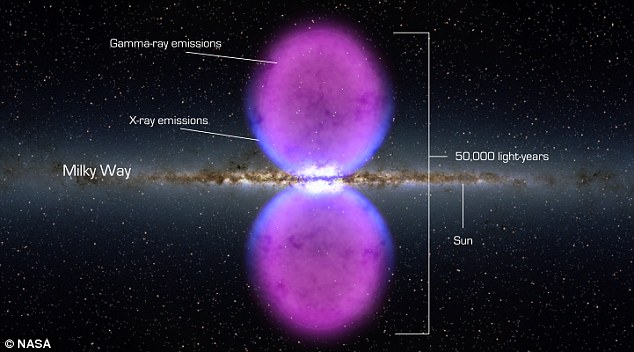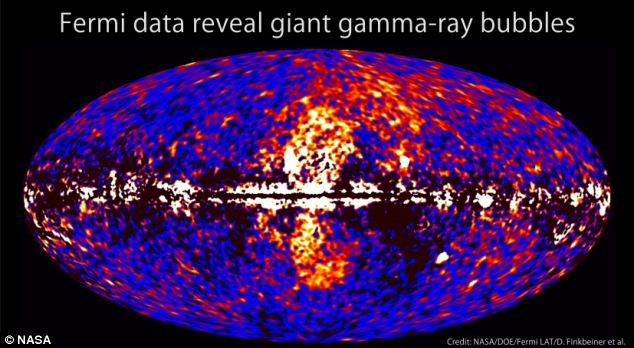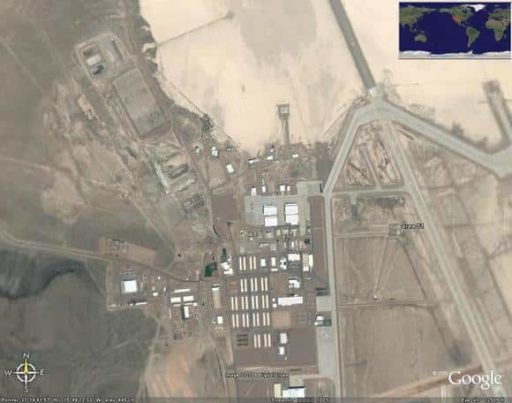NASA Scientists discovered two huge bubbles of gamma rays erupting from the center of the Milky Way galaxyAt 50 million light years tall together, they extend from the constellation Virgo to the constellation Grus and are among the largest such structures ever found.
The discovery has reminded experts that however much we know about the galaxy, it is always full of surprises.
But they have also tried their best to explain how they got here – one theory is that they have been fuelled by a wave of star births and deaths at the centre of the Milky Way.
Other researchers have suggested it might be connected with the huge black hole which sits at the centre of the galaxy.
The bubbles were found by NASA’s Fermi Gamma-Ray Telescope, which scans the sky every three hours for high energy light.
The source of the bubbles is a mystery. One possibility is that they are fueled by a wave of star births and deaths at the center of the galaxy. Another option is a gigantic belch from the black hole known to reside, like Jabba the Hutt, at the center of the Milky Way. What it is apparently not is dark matter, the mysterious something that astronomers say makes up a quarter of the universe and holds galaxies together.
David Spergel, an astrophysicist at Princeton added: ‘Wow. And we think we know a lot about our own galaxy’.
Jon Morse, head of astrophysics at NASA headquarters, said, “This shows again that the universe is full of surprises.”
The bubbles contain the energy equivalent to 100,000 supernova explosions, leading to NASA ruling out dark matter, which makes up a quarter of the universe.
One theory being explored is that the supermassive black hole at the centre of the Milky Way may have had some kind of outburst.
At the time, Dr. Finkbeiner and his colleagues speculated that the haze was produced by dark matter. The center of the galaxy is home to all manner of wild and woolly high-energy phenomena, including a gigantic black hole and violently spinning pulsars, but cosmological theories also suggest that dark matter would be concentrated there. Collisions of dark matter particles, the theory goes, could produce showers of gamma rays.
‘You have to ask where could energy like that come from,’ said astronomer Doug Finkbeiner, from the Harvard-Smithsonian Center for Astrophysics.
‘We know it didn’t get to be that big by sitting there quietly all the time. It certainly has had big accretion events in the past, where material falls on it and then some of that material comes back out as high-energy particles blasted out in the form of a jet.
‘We’ve never really seen very good evidence of it. This might be the first evidence for a major outburst of the black hole at the center of the galaxy.
‘When it’s going full-blast … it would not actually take an enormous amount of time – maybe 10,000 or 100,000 years – for it to produce enough energy to create these structures.’





